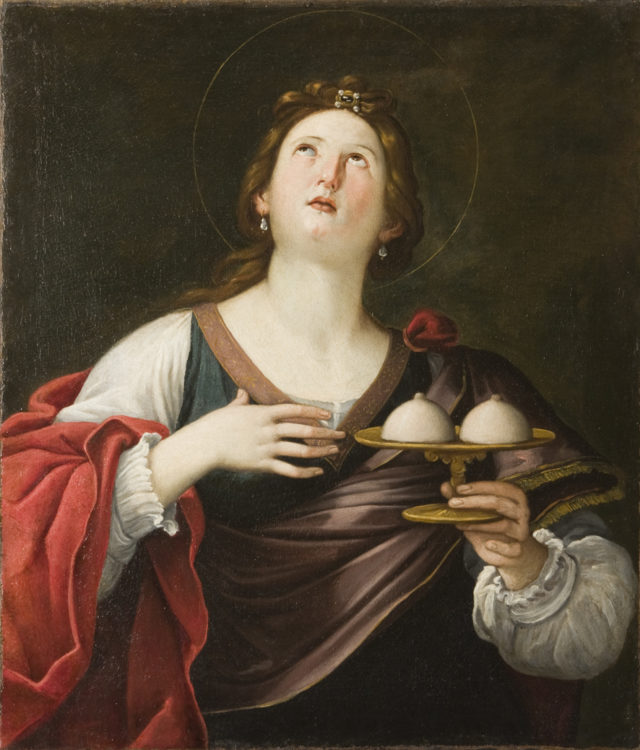On February 5th, in the liturgical calendar, we reverently and devotedly celebrate the figure of Saint Agatha, a martyr venerated through the centuries. This saint, an embodiment of faith and fortitude, appears in numerous works of art, where her image is often intertwined with memories of suffering and spiritual triumph.
Saint Agatha is frequently depicted in poses reminiscent of Saint Lucy, silently expressing the deep connection between these martyrs of faith. Her iconographic attributes, rich in meaning, include the palm of martyrdom, a universal symbol of victory over death and pain. Often, in her other hand, she holds a plate or tray, upon which rest her severed breasts, a macabre but powerful symbol of her sacrifice and uncorrupt devotion.
In representations of Saint Agatha, tongs, the tool of her atrocious torment, might also appear. However, careful observation is necessary to distinguish her from Saint Apollonia, another martyr, recognizable by her association with dental instruments, making her the patron saint of dentists.
The portrayal of Saint Agatha can be enriched with other symbols: a brazier with burning coals or a wood fire, witnesses to her indomitable courage; a torch or a candle, metaphors for the undying light of faith; Mount Etna erupting, with the city of Catania in the background, reminding us of her homeland. Sometimes a book appears, symbolizing the Word of God she witnessed, or a lily, emblematic of innocence and purity. In some depictions, the palm of martyrdom may be replaced or accompanied by a crown of roses, held by angels, symbolizing her sanctity and martyrdom.
Among the works celebrating her figure, the following stand out:
Sebastiano del Piombo (1485-1547), with “The Martyrdom of Saint Agatha” at the Palazzo Pitti in Florence, a piece blending drama and devotion in a canvas of unmatched mastery.
Elisabetta Sirani (1638-1665), whose “Saint Agatha” captures the essence of the martyr with a delicacy and intensity of gaze that transcends time.
Guido Cagnacci (1601-1663), whose “Saint Agatha” (circa 1635-1640), preserved at the BPER Bank in Modena, is a vibrant expression of pathos and spirituality.
Giambattista Tiepolo (1696-1770), with “The Martyrdom of Saint Agatha” (circa 1750), housed in the Gemäldegalerie in Berlin, a masterpiece distinguished by its theatricality and dynamic composition.
Bernardino Luini (1482-1532), whose “Saint Agatha” (1520), at the Borghese Gallery in Rome, enchants with its Renaissance grace and emotional depth.
Lastly, the work of the Circle of Giannandrea Lazzarino, “S. Agatha in Prison” (18th century), at the National Gallery of Marche in Urbino, narrates with a delicate and introspective touch the period of the saint’s imprisonment.
In these canvases, Saint Agatha lives, suffers, and triumphs, guiding us through a journey of faith and art, where each brushstroke, every color, every line becomes a hymn to her story and her eternal light.

















